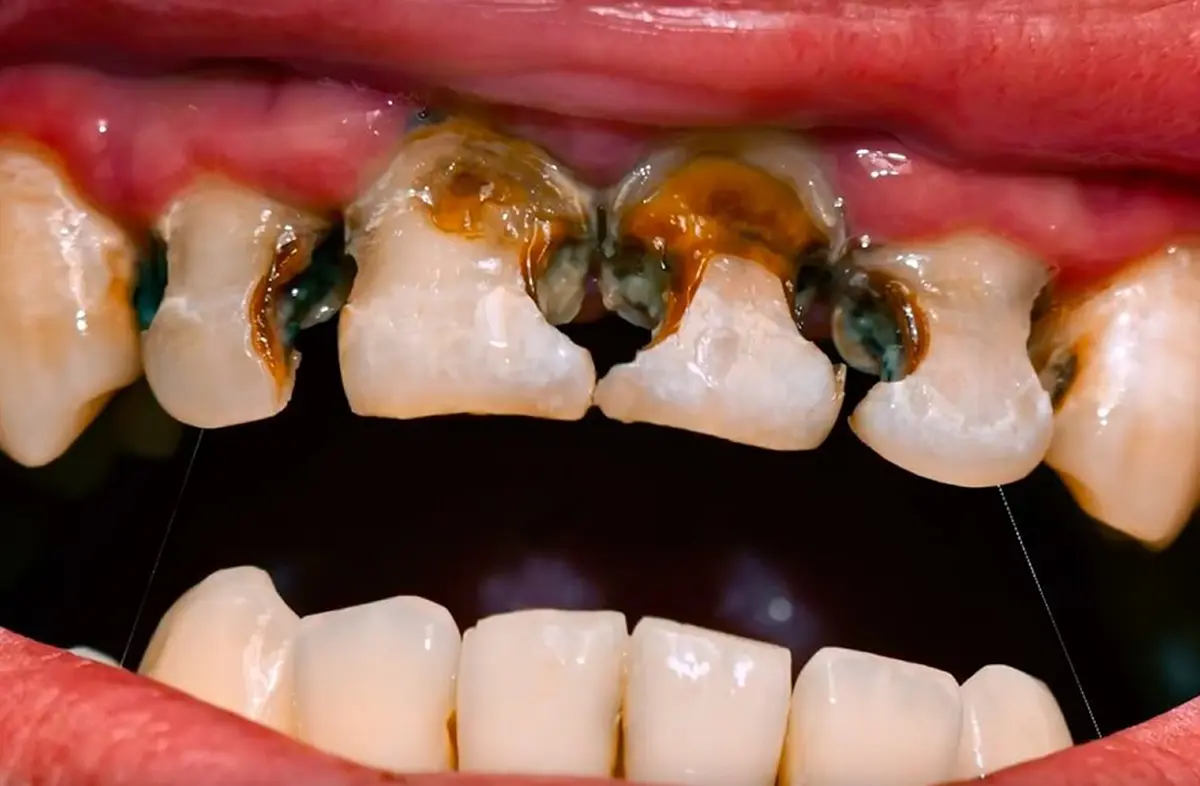5 Stages of Tooth Decay: Early Signs to Treatment in Vietnam
- Home
- 5 Stages of Tooth Decay: Early Signs to Treatment in Vietnam

Tooth decay doesn’t happen overnight. Understanding the 5 stages of tooth decay helps you catch problems early and save money on treatment. This guide explains each stage and your treatment options in Vietnam.
Before diving into the 5 stages of tooth decay, let’s understand what causes cavities. Tooth decay occurs when bacteria in the mouth produce acids that erode the enamel, the hard outer layer of the teeth. This process is driven by the consumption of sugars and starches, which bacteria metabolize.
Certain types of food wear down your teeth. The longer these foods stick to the surface of your teeth, the more acidic your mouth will become, leading to the formation of cavities.
How Decay Progresses: Plaque is a sticky film containing bacteria that covers the teeth and builds up over time. Bacteria, especially Streptococcus mutans, feed on sugar and starches. This creates acid that attacks your tooth enamel, starting the decay process.
When our teeth experience demineralization, they’re going through the first stage of tooth decay. The external layer of our teeth is composed of a hard substance called enamel, which can weaken and lose some of its chemical composition due to exposure to acid.
What You’ll See: Stage 1 tooth decay can be detected by looking for small white spots on teeth, which indicate a loss of minerals and enamel. These white spots appear where minerals have leached out of the tooth.
Good News About Stage 1: This earliest stage of tooth decay can actually be reversed before more permanent damage occurs. This can be achieved by treating the teeth with fluoride.
Vietnam Treatment for Stage 1:
Prevention at Home:
After demineralisation, the enamel weakens, allowing bacteria to create small cavities or yellowish-brown holes. Typically painless, these cavities require dental fillings to repair.
What Happens in Stage 2: The second stage of tooth decay involves the further break down of tooth enamel. People who have developed white spots due to mineral loss will notice them turning brown or yellow.
Signs of Stage 2 Decay:
Vietnam Treatment Options:
Why Treat Stage 2 Quickly: Early treatment prevents progression to deeper stages. Small fillings preserve more natural tooth structure and cost much less than advanced treatments.
Stage 3 involves decay reaching the dentin, the softer layer beneath enamel. Dentin contains tiny tubes that connect to your tooth’s nerve, causing sensitivity and pain.
Stage 3 Symptoms:
Vietnam Treatment for Stage 3:
Why Stage 3 Needs Immediate Attention: If left untreated, your cavity can spread deeper into the tooth and reach the dentin decay, pulp decay or abscess stages. Treatment becomes more complex and expensive at later stages.
Stage 4 occurs when bacteria reach the tooth’s pulp, which contains nerves and blood vessels. This stage often requires root canal treatment to save the tooth.
Stage 4 Symptoms:
Vietnam Treatment Options:
Western Country Comparison:
Success Rates in Vietnam: Modern Vietnamese dental clinics achieve 90-95% success rates for root canal treatments using the same techniques and materials as Western countries.
Stage 5 tooth decay can evolve into a much bigger problem when left untreated. You can experience infected gums, missing teeth, deteriorated bones, and even brain damage.
Stage 5 Symptoms:
Emergency Treatment in Vietnam:
Advanced Options:
Understanding treatment costs helps you budget for dental care:
Vietnam vs. Western Countries:
The average dental cost in Vietnam is remarkably lower than in Western countries (approximately 70% cheaper).
Daily Prevention:
Regular Checkups:
Diet and Lifestyle:
Self-Examination Tips:
When to Seek Immediate Care:
For Early Stages (1-2):
For Advanced Stages (3-5):
Emergency Situations: Vietnamese dental clinics offer 24-hour emergency services. Many speak English and can provide immediate pain relief and treatment.
Financial Benefits:
Health Benefits:
Quality of Life:
Modern Technology:
Skilled Dentists:
Quality Materials:
If You’re at Stage 1:
If You’re at Stage 2-3:
If You’re at Stage 4-5:
“Can I reverse tooth decay naturally?” Only Stage 1 (demineralization) can be reversed with fluoride treatment and improved oral hygiene. Stages 2-5 require professional treatment.
“How fast do the stages progress?” Progression varies by individual. Poor oral hygiene and high sugar intake can advance from Stage 1 to Stage 4 in months. Good care may slow progression for years.
“Is Vietnam treatment as good as home?” Vietnam offers affordable dental treatment, making it a good alternative for your dental trip. On average, you can save 70-80% on the total dental cost. Quality matches international standards.
“What if I need emergency treatment in Vietnam?” Most major cities have 24-hour dental emergency services with English-speaking staff. Treatment quality and pain relief are excellent.
Understanding the 5 stages of tooth decay empowers you to make smart decisions about your dental health. Early detection and treatment save money, preserve your teeth, and prevent painful complications.
Vietnam’s world-class dental care makes treatment affordable at every stage. Whether you need simple fluoride treatment or complex root canal therapy, you’ll receive excellent care at a fraction of Western costs.
Don’t wait for pain to force your decision. Contact qualified Vietnam dental clinics today to assess your oral health and create a treatment plan that fits your needs and budget. Your teeth, your wallet, and your peace of mind will thank you.